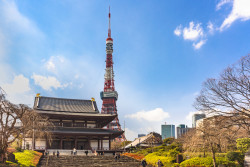
December 15, 2023
Is COVID-19 still in Japan?
The lingering presence of COVID-19 in Tokyo
By Oliver Arlow
This page has been brought to you as a public service of the Bluff Medical and Dental Clinic in Yokohama.
In the ever-shifting landscape of global news, it’s easy to assume that a crisis no longer making headlines has vanished from our lives. However, the specter of the COVID-19 pandemic, which held the world in its grip for years, has not dissipated entirely. Despite the pandemic no longer dominating news cycles, recent developments remind us that the virus is far from eradicated.
In mid-September, health authorities in Japan declared the arrival of the ninth wave of the coronavirus, signaling a resurgence that brought infection rates to levels not witnessed since the government downgraded the virus to a category five infection, akin to the seasonal flu. (https://www.asahi.com/ajw/articles/15003207).
The impact has been substantial, with a staggering 33.8 million infections and nearly 75,000 fatalities in Japan alone (https://www.worldometers.info/coronavirus/country/japan/). Though new daily infections have plummeted to under 10,000 cases, a sharp decline from the peak of over 260,000 cases in August 2022, emerging variants raise concerns about the virus’s persistence and ability to mutate.
Among the newly identified variants in Japan, EG.5 (Eris) and BA.2.86 (Pirola) stand out. The Pirola variant, in particular, has sparked worry due to a spike protein mutation that has rendered it more infectious (https://www.cnbctv18.com/healthcare/covid-19-new-variant-pirola-could-be-highly-immune-evasive-japanese-study-18171761.htm). Health authorities caution against complacency, emphasizing the potential danger of the virus spreading concurrently with other seasonal ailments, such as flu and gastroenteritis. A recent case involving a high school student diagnosed with all three illnesses simultaneously underscores the risks, especially for children and the elderly.
Despite the challenges, the experience of the global pandemic has significantly advanced our understanding of the virus. Researchers from the University of Tsukuba, for instance, recently published a paper in the British academic journal “Scientific Reports,” shedding light on the dynamics of virus transmission (https://www.tsukuba.ac.jp/en/research-news/20231019141500.html). Their findings highlight that the risk of infection peaks in the five seconds following proximity to an infected person. With fewer people now wearing protective masks, the researchers advocate for continued adherence to precautionary measures, including maintaining social distance in crowded areas.
While avoiding everyone and anyone may not be a sustainable long-term solution, the ongoing research provides reassurance. As the world braces for the inevitable emergence of new viruses, experts stress that it’s not a matter of if but when the next pandemic will strike. The knowledge gained from the COVID-19 pandemic underscores the importance of remaining vigilant, adapting preventive measures, and being prepared for future health challenges.
In closing, this information is brought to you as a public service by the Yokohama Bluff Medical and Dental Clinic. To inquire for English-speaking appointments, please visit the website bluffclinic.com. Amidst the evolving landscape of global health, awareness and preparedness remain our strongest allies.







